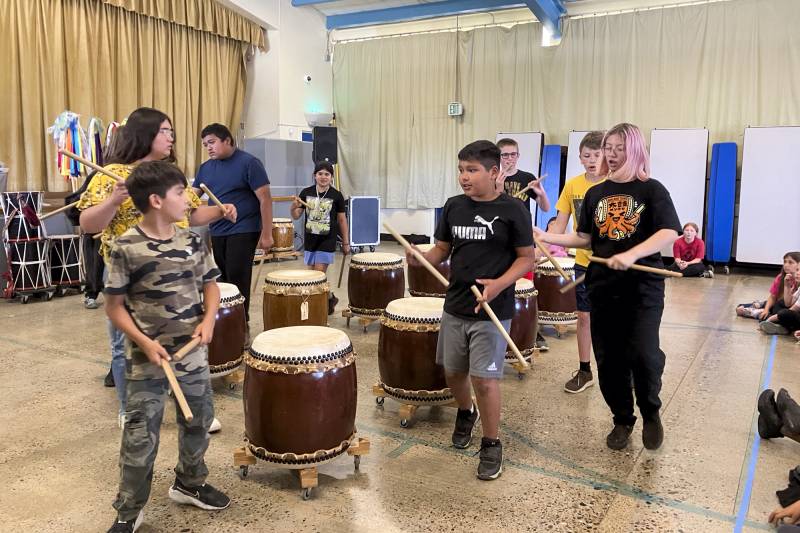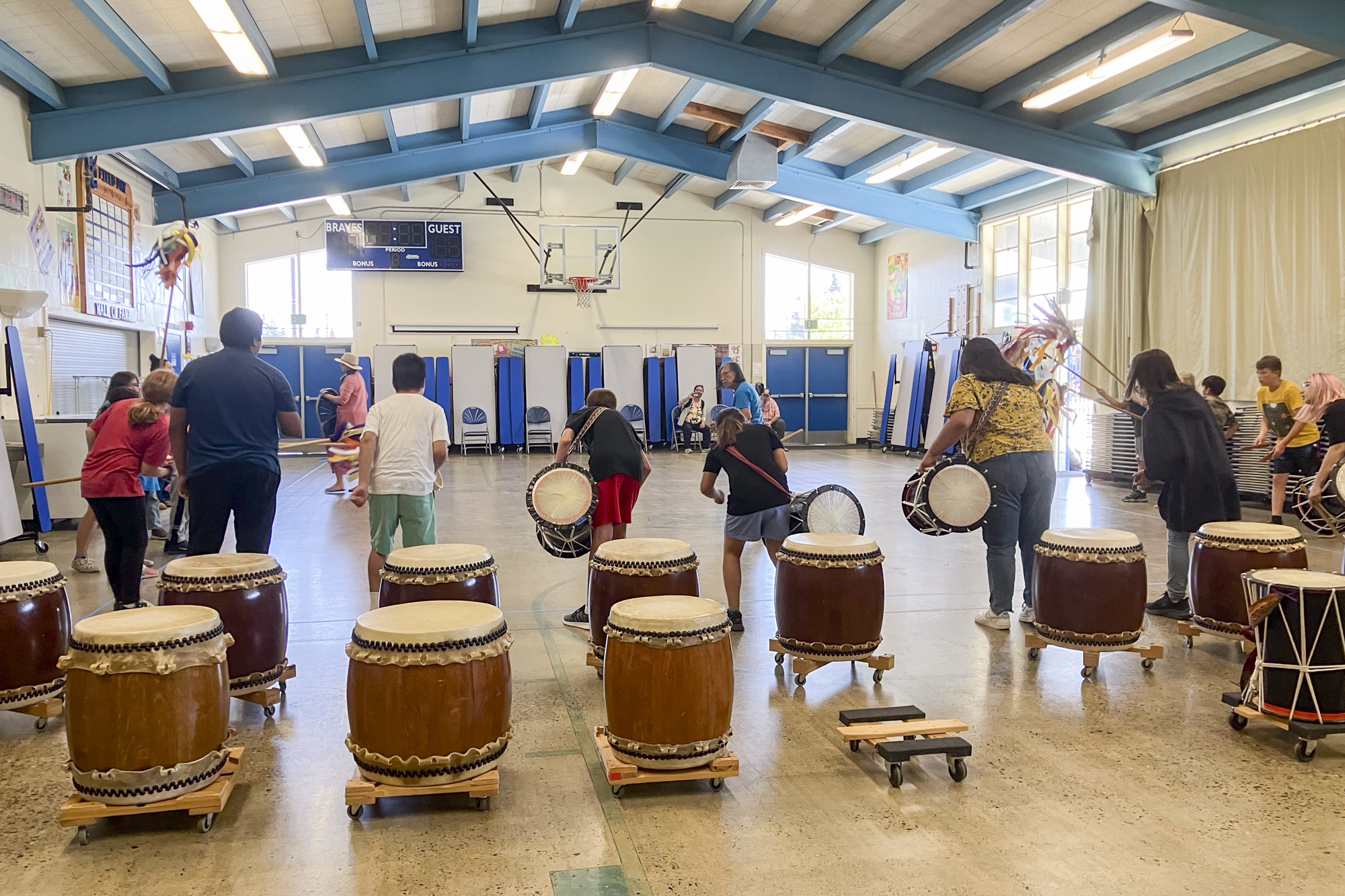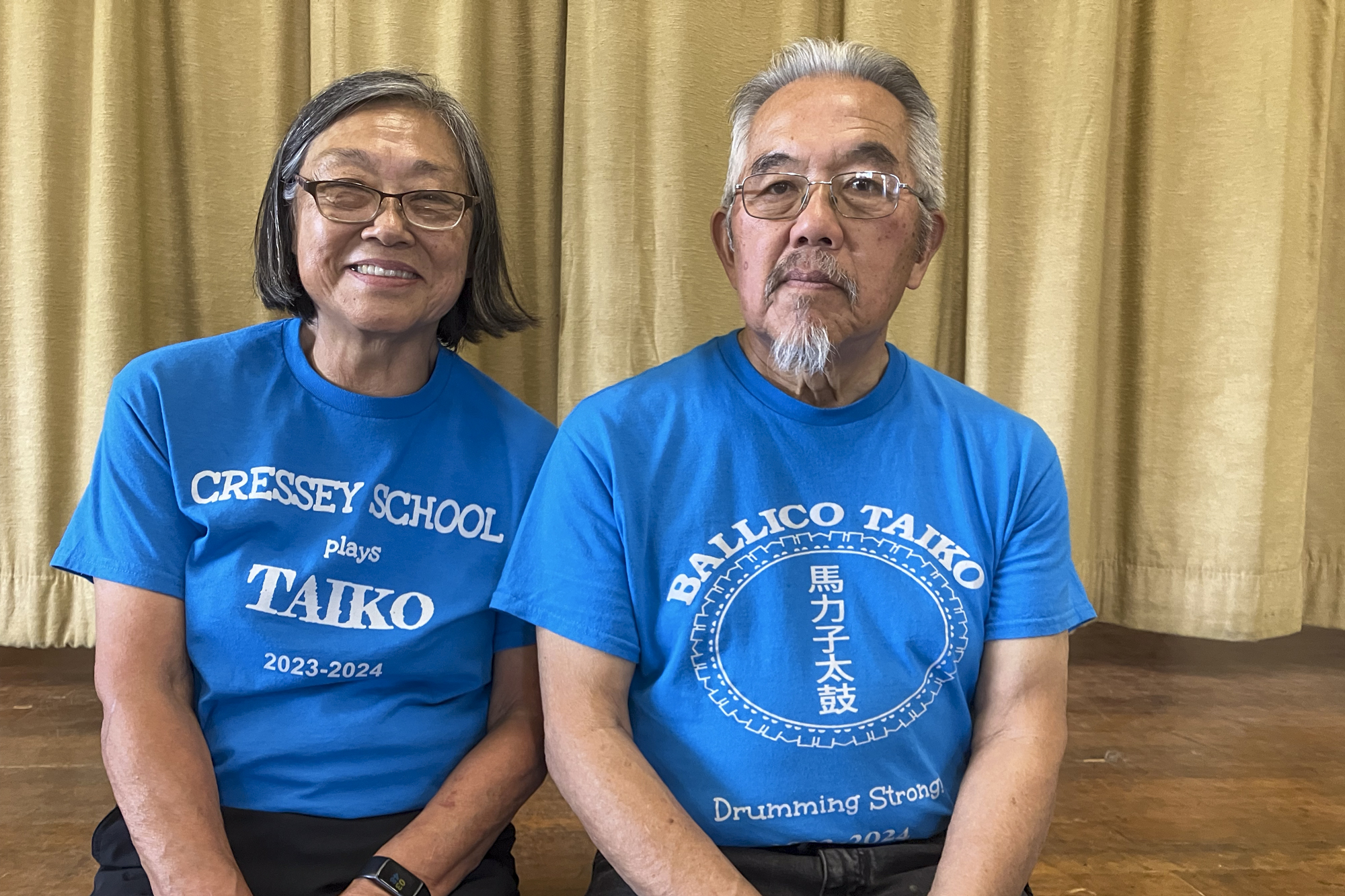The tiny Central Valley farming community of Ballico in Merced County sits in the middle of acres of almond orchards. Other than farmland, there’s not a whole lot to see: a park, a small Veterans Memorial Building and a mini-mart called Mom and Pops. But head down the street to Ballico Elementary School and you’ll find there’s plenty to hear.
In the school’s auditorium, which also functions as a gym and a cafeteria, kids practice Taiko — a traditional style of Japanese drumming — year-round. They perform year-round, too, at festivals, schools and just about anywhere they get asked to exhibit their drumming skills.
On this day last spring, about 20 students played for their peers. The drummers jumped up and down as they beat their sticks on handmade Taiko drums. They lifted their sticks high in the air and then hit them hard on the drum heads. They stepped to the left and then to the right.

“Yassei Yassei” they yelled out — words meant to encourage each other.
“With Taiko, I kind of came out of my shell,” says sixth-grader Edward Souza, who credits Taiko with giving him a sense of belonging. “I got new friends. I actually got more comfortable with performing.”



